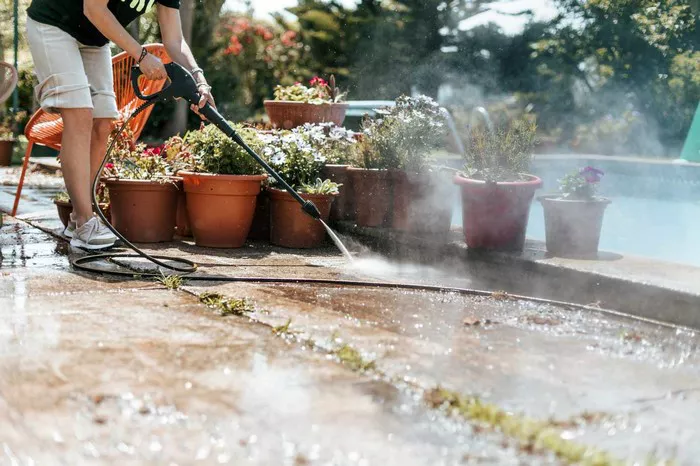Gas pressure washers are powerful tools used for cleaning driveways, vehicles, patios, and various outdoor surfaces. Like any gasoline-powered engine, maintaining a gas pressure washer requires regular oil changes to ensure smooth operation and longevity. Choosing the right type of oil for your pressure washer is crucial, as improper lubrication can lead to overheating, premature wear, and mechanical failure. In this guide, we will explore the different types of oil used in gas pressure washers, factors to consider when selecting oil, and best maintenance practices.
Understanding the Oil Requirements of a Gas Pressure Washer
A gas pressure washer consists of two primary components that require oil: the engine and the pump. Each component has different lubrication needs, and using the wrong type of oil can cause operational issues.
Engine Oil: The engine of a gas pressure washer requires a high-quality motor oil similar to what is used in lawnmowers and small engines.
Pump Oil: The pump also requires lubrication, but it is different from engine oil. Many pressure washer pumps use non-detergent oil specifically designed for pump operation.
Types of Oil for Gas Pressure Washer Engines
The type of oil required for the engine depends on the climate and the engine manufacturer’s recommendations. Here are some common types of engine oil used in gas pressure washers:
1. SAE 30
Recommended for warm climates and temperatures above 40°F (4°C).
Commonly used in lawnmowers and air-cooled engines.
Provides excellent protection against wear and deposits.
2. SAE 10W-30
Ideal for varying temperatures, from 0°F to 100°F (-18°C to 38°C).
Improves cold-start performance.
May result in higher oil consumption in warmer temperatures.
3. SAE 5W-30
Suitable for extremely cold conditions, below freezing temperatures.
Provides easier starting in cold weather.
Reduces engine wear during winter storage.
4. Synthetic Oils (10W-30 or 5W-30)
Offers superior protection across a wide range of temperatures.
Reduces engine wear and enhances performance.
Provides better fuel efficiency and oxidation resistance.
Many manufacturers recommend synthetic oils because they provide enhanced lubrication and longer oil change intervals. However, always check the owner’s manual to confirm compatibility.
Types of Oil for Gas Pressure Washer Pumps
Pressure washer pumps require a different type of oil than engines. Most manufacturers specify using non-detergent oils, as detergents in engine oil can cause aeration and reduce lubrication in the pump.
1. 30W Non-Detergent Oil
Most commonly recommended for pressure washer pumps.
Provides optimal lubrication and cooling for high-pressure pump components.
Prevents foaming and cavitation.
2. Pump-Specific Oil
Some manufacturers produce specially formulated pump oils designed for their specific models.
Offers enhanced protection and longevity for internal pump components.
Often synthetic or semi-synthetic for added benefits.
3. ISO 68 Hydraulic Oil
Some pressure washer pumps can use hydraulic oil with an ISO 68 viscosity rating.
Provides excellent thermal stability and wear resistance.
Ideal for heavy-duty applications.
How to Check and Change Oil in a Gas Pressure Washer
Regular maintenance and timely oil changes will ensure the longevity of your pressure washer. Here’s a step-by-step guide on how to check and change both engine and pump oil.
Checking the Engine Oil
Place the pressure washer on a flat, stable surface.
Remove the oil dipstick and wipe it clean.
Insert the dipstick back in without screwing it down.
Remove the dipstick again and check the oil level. If it’s low, add the recommended oil type.
Changing the Engine Oil
Run the engine for a few minutes to warm up the oil.
Turn off the engine and remove the spark plug wire for safety.
Place an oil pan under the drain plug and remove the plug.
Let the oil drain completely before replacing the plug.
Refill with the recommended engine oil and check the level.
Reattach the spark plug wire and run the engine briefly to circulate the new oil.
Checking the Pump Oil
Locate the pump oil sight glass or dipstick.
Check the oil level and clarity. If the oil appears milky or dark, it needs to be changed.
Changing the Pump Oil
Place a drain pan under the pump.
Remove the oil fill cap and drain plug to let the old oil drain completely.
Replace the drain plug and fill the pump with new oil using the recommended type.
Replace the oil fill cap and check the oil level.
How Often Should You Change Pressure Washer Oil?
The frequency of oil changes depends on usage and manufacturer recommendations. Here are some general guidelines:
Engine Oil: Change after the first 5 hours of use, then every 50 hours or once per season.
Pump Oil: Change after the first 50 hours of use, then every 100-200 hours or once per season.
Conclusion
Using the correct type of oil for your gas pressure washer is essential for maintaining performance, preventing breakdowns, and extending the lifespan of the machine. Always refer to the owner’s manual for specific recommendations, and make sure to perform regular maintenance. Whether it’s the engine or the pump, proper lubrication is key to keeping your pressure washer running smoothly and efficiently. By following the guidelines in this article, you can ensure that your gas pressure washer remains in top working condition for years to come.

